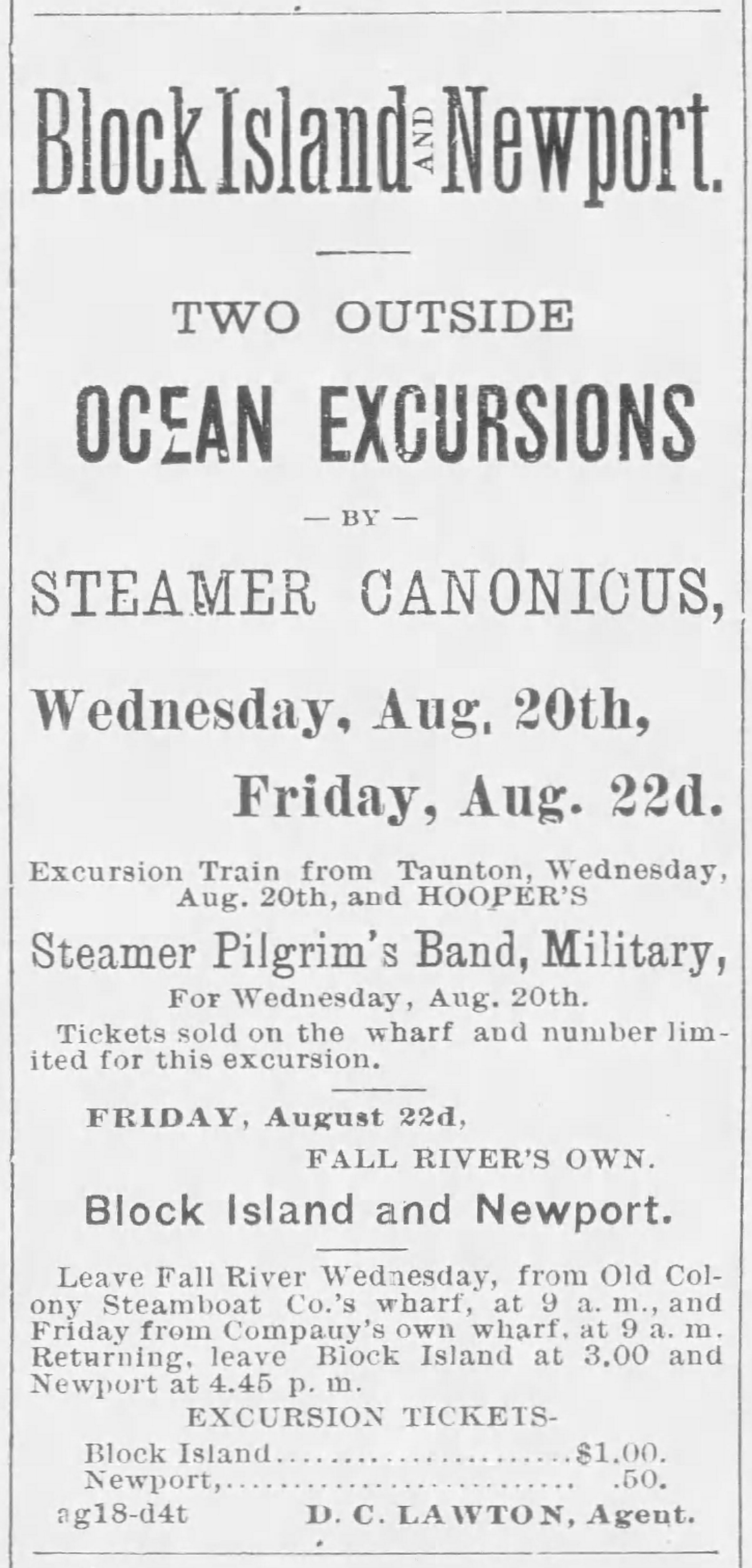The Music of the Steam Ships
The Steam Ship Canonicus
In the late 19th century, a number of steamships made calls to Newport, including the Canonicus, pictured above. In order to compete with each other, they would have full orchestras and bands perform and highlight them in their advertisements, as we see in the two newspaper clips below. Both of these ads were for special “excursions” from Fall River to Block Island with stops in Newport. The bands used would range from bands created for the ships, including the Steamer Pilgrim’s Band, and local bands including Hall’s Celebrated Band, the band of Charles Hall, a local musician who for a time served as the band master at the Training Station in Newport.
The Artillery Company of Newport
The Artillery Company of Newport often took cruises on the Steamers and a band would accompany them. The Company has a rich storied musical past, including two marches composed in their honor. You can hear one of those marches by visiting our Music About Newport page. We are close to receiving a copy of the second march!
The Fall River Line
The Fall River Line operated from the mid 1800s until around 1937. The line ran from Boston to New York City, and included stops in Newport. The ships of the Fall River Line often included live music on the trips. The Fall River Line became a favorite subject of composers in the late 1800s and early 1900s.
The Fall River Line March
By R. Williams. The Fall River Line March was composed in 1882 for Military Band. The march was arranged for piano by E.M. Bagley. On the score is the steamer S.S. Providence. It also names the band that would perform on the ship, Hooper’s 3rd Regiment Band.
The Priscilla March and Two Step
By Tom Clark. Clark composed this work in 1895, and as you can see on the bottom of the score below, arranged it for a wide variety of ensembles as well as solo piano.
The Old Fall River Line
Words by William Jerome and Andrew B. Sterling, and music by Harry Von Tilzer
This song was composed in 1913.








